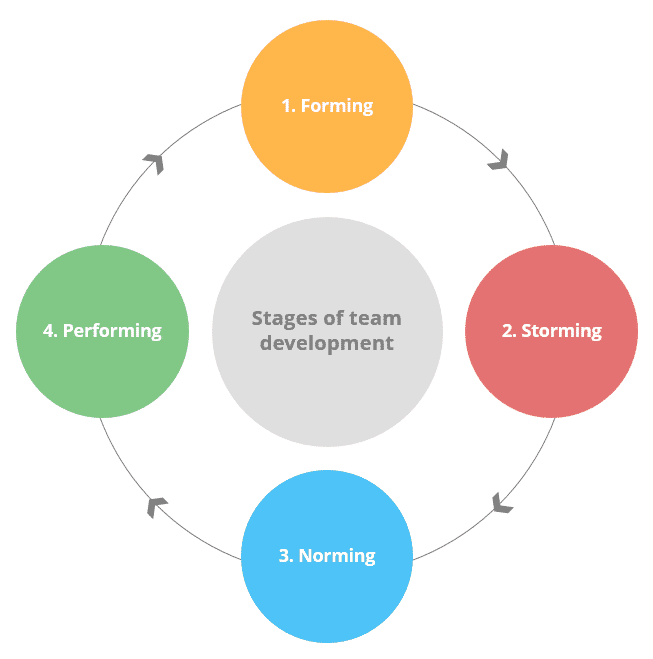Managing Teamwork - Stages of team development
- Guides
- Managing Teamwork
- Stages of team development
When people are brought together as a team, they don't necessarily function as a team right from the start.
They tend to move through a number of stages - forming, storming, norming, and performing - as group members establish roles, relationships and figure out how to work together.
1. Forming
The first stage, Forming, is characterised by dependence. Team members are unfamiliar with the groups tasks and so they rely heavily on the group leader for guidance and direction.
Relationships are also new at this point and team members tend to feel a strong need to be accepted by the group. To maintain group harmony, team members keep things simple and avoid controversy and conflict.
To grow from this stage to the next, each team member must be prepared to risk the possibility of conflict. They need to discuss difficult issues and challenge each other.
2. Storming
The second stage, Storming, is characterised by competition and conflict. Team members will compete for power and authority within the group, and conflict will arise as the team decide things like who is going to be responsible for what, how work should be completed, and what the ground rules are.
Individual team member behaviour can vary greatly during this stage. You may find that some team members are openly hostile and attempt to dominate the group, while others withdraw and remain silent.
To grow from this stage to the next, team members need to engage in collaborative problem solving. This starts with a willingness to listen and consider the interests of others.

3. Norming
The third stage, Norming, is characterised by cohesion. Team roles are established as well as ground rules for how the team operates (i.e. how things are done around here).
Team members accept each other's differences and communicate openly, sharing ideas and giving feedback. There is a growing sense of belonging amongst team members and a desire to maintain the group.
To grow from this stage, team members need to build their collaborative ability. They need to learn how each individual team member operates and become skilled in coordinating their activities.
4. Performing
The fourth stage, Performing, is characterised by collaboration. The team has reached a high level of maturity and is now able to work and solve problems with minimal supervision. Team members support each other and dynamically adjust roles and tasks based on the changing needs of the team.
At this stage there is a very high level of unity. The team has a strong sense of identity, morale is high, and team loyalty is intense.
It is important to remember that even though a team may be “Performing”, reversion to earlier phases can still occur. This is why the diagram is drawn as a circle.
Many teams will continue to have bouts of “Storming” from time-to-time, for example, after an organisational change. Also, as team members leave and new team members join, the team might go back through the stages.
Learn more